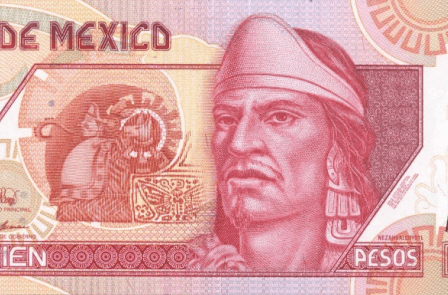The peso begins the session with a depreciation of 0.42% or 10.1 cents, trading around 23.97 pesos per dollar, moving along with most of the currencies in the exchange market that also show a moderate depreciation in the face of a higher perception of risk.
This morning in the media it was announced that the Donald Trump administration plans to block the trade in semiconductors that are manufactured in the United States and acquired by the Chinese technology giant, Huawei.
Although an official announcement has not been made, it is mentioned that the measure is backed by the protection of national security and if confirmed, there is likely to be a response from the Chinese government.
In the capital markets in Europe a mixed performance is observed, with a downward trend, which makes it probable that the main indexes will close with losses.

For its part, in the United States, the main indexes registered falls of more than 1% in the futures market, making it highly probable that the session will start with losses.
The peso and fees
It is important to note that caution in global financial markets has also increased in the week, after the Fed president doubted that an accelerated economic recovery will be observed this year before the reopening of the economy.
Likewise, the number of confirmed cases of coronavirus globally continues to grow and in the United States the number of deaths already exceeds 80,000, so the economic reopening is likely to be slow in the face of new outbreaks.
For the week, the 10-year Treasury rate of return showed a decline of 8.5 basis points to 0.59%, being the biggest decline since March, indicating greater demand for the debt instrument.
Regarding economic indicators, a few moments ago it was published in the United States that retail sales registered a monthly contraction of 16.4% in April, after contracting 8.3% in March, being the largest contraction on record.
At an annual rate, the contraction in retail sales was 21.6%. Inside, the monthly drops in sales of home furniture (-58.7%), electronics and appliances (-60.6%), clothing and accessories (-78.8%) and sports stores (-38.0%) stand out. Growth was only observed in one indicator in “storeless” sales, that is, online sales, which grew by 8.4% monthly.
The economy
For its part, the peso accumulates a weekly depreciation of 1.36%, being the first fall after two weeks of gains. The loss of the Mexican peso has not been profound because in the middle of the week in Mexico an economic reopening plan was announced that generated some optimism.
The peso also responded positively to Banco de México’s decision to cut the interest rate by 50 basis points to 5.50%, as the market interpreted that the Governing Board does not plan to cut the interest rate on an accelerated basis, because the The outlook for inflation remains uncertain.
During the session, an exchange rate is expected, trading between 23.50 and 24.30 pesos per dollar. The euro starts the session unchanged from Thursday’s close, trading at $ 1.0806 per euro, while the pound is down 0.11%, at a price of $ 1.2156 per pound.
Money and debt market
In the debt market, the yield on United States 10-year Treasury bonds decreases 3.1 basis points, at a rate of 0.59%, while the yield on 10-year M bonds in Mexico remains unchanged, at 6.14 percent.
Derivatives market
To hedge against a depreciation of the peso beyond 25.5 pesos per dollar, a call option, with an exercise date within 1 month, has a 1.44% premium and represents the right but not the obligation to buy dollars in the level mentioned above.
On the other hand, the interbank forward for sale is at 24.0582 at 1 month, 24.5483 at 6 months and 25.0062 pesos per dollar at one year.
Gabriela Siller; PhD
Director of Economic-Financial Analysis.
Banco BASE

